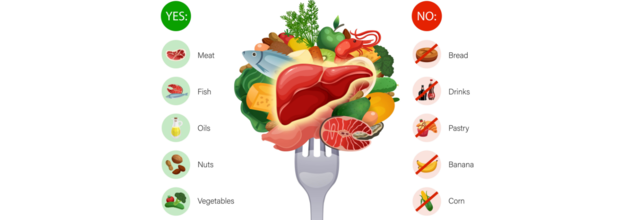
Credit: Canva
Wiggling Toes To Laughing: These Everyday Practices Can Boost Your Heart Health
Can fidgeting and belly laughing keep your heart ticking? New research says, Yes.
Cardiovascular Diseases (CVD) are the leading cause of death across the US. As per the American Heart Association (AHA), 61% of American adults are likely to develop some kind of CVD in the next 30 years. Beyond the US, data suggests that around 17.9 million lives each year are lost to heart diseases alone.
While everyone knows that sticking to a healthy diet and exercising is the key to countering it, there are lesser-known ways to boost your health and some of them are even fun. But before we explore that, it must be noted that improved breathing can have profound benefits on long-term cardiovascular function. Since the heart and lungs work hand in hand to deliver oxygen to the body, daily habits that improve lung function — like deep breathing exercises, staying active and avoiding pollutants — are key to preventing heart disease and supporting long-term cardiovascular health.
Here Are Simple Yet Fun Ways To Boost Your Lung & Heart Health
Wiggle Your Toes: A simple habit like wiggling your toes for 30 seconds every hour can help maintain healthy circulation. This small movement stimulates blood flow, preventing pooling and supporting overall circulation. Improved circulation ensures better oxygen flow throughout the body, benefiting both lung and heart health.Maintain Proper Posture: Posture plays a crucial role in respiratory and cardiovascular health. Poor posture compresses the chest cavity, restricting lung capacity and limiting airflow. Over time, this can reduce oxygen levels in the bloodstream, forcing the heart to work harder. Maintaining proper spinal alignment opens up the chest cavity, allowing the lungs to expand fully. This leads to enhanced oxygen intake, improved breathing, and reduced stress on the heart.
Laugh More for a Healthier Heart: Laughter isn’t just good for the soul—it’s great for your heart too! Studies have shown that laughter therapy can improve cardiovascular health and ease symptoms of heart disease. When you laugh, your diaphragm and abdominal muscles contract, promoting deep breathing and enhancing oxygen exchange. This process helps lower blood pressure, improve circulation, and reduce stress, all of which contribute to a healthier heart and lungs.
Practice Gratitude Daily: Cultivating gratitude can have significant health benefits. Chronic stress triggers the release of cortisol, a hormone linked to inflammation in the body, including the respiratory system. By practising gratitude—such as keeping a journal or reflecting on positive moments—you can lower stress and anxiety, leading to more relaxed breathing and improved lung function. Studies suggest that those who engage in gratitude practices experience greater well-being and emotional resilience.
Try Pursed Lip Breathing: Regulating your breathing can be a game-changer for lung efficiency. Pursed lip breathing, a simple technique where you inhale deeply and exhale slowly as if blowing out birthday candles, can improve airflow and prevent airway collapse. This technique is particularly helpful during periods of stress or physical activity. By prolonging exhalation, pursed lip breathing enhances oxygen exchange, reduces the heart’s workload, and supports better respiratory function.

World Liver Day 2025: What Extended Ketosis Really Does To Liver Enzymes And Function
For the millions of people globally, "healthy eating" is a privilege rather than a default choice. From high costs of healthy foods to nutritious food systems that favor profit over health, the obstacles to a liver-supportive diet are real. Among popular diets, the ketogenic diet, or keto, has become extremely popular for its fast weight loss advantages but beneath its high-fat, low-carb framework is a less-discussed issue—how prolonged ketosis can silently burden the liver.
Your liver is your body's control center for detoxification and metabolic regulation. It processes toxins, digests nutrients, produces bile to break down fats, stores energy, and even produces blood-clotting factors.
“While many factors shaping our diet lie outside personal control—like zoning laws, school meal policies, and labeling—what remains in our hands is the knowledge of how our food choices impact our health,” says Nutritionist and Diabetes & Inflammation Specialist, Khushboo Jain Tibrewala.
However, these processes can be easily undone by modern lives—too much booze, sweet diets, lazy lifestyles, and, ironically enough, some hardcore dietary regimes like prolonged keto. The liver's tough, true, but get it working around its metabolic tipping point for sustained periods, and it begins to exhibit symptoms—a lot of which come in the form of abnormal liver enzymes and inflammation.
What Is Ketosis?
Ketosis is a metabolic process by which your body shifts from glucose (carbohydrate) to fat fueling. Carbohydrates in your diet, under normal conditions, get digested into glucose, which gets utilized by the body as fuel. In ketosis, fats are metabolized into ketone bodies—an additional fuel for brain and muscle tissue.
As per Tibrewala, this condition can be triggered by, "A ketogenic diet—intentionally low in carbohydrates and high in fat, or in severe cases of uncontrolled diabetes, where glucose metabolism is disturbed."
Although created initially to control epilepsy, the keto diet is today mainstream. Individuals remain in ketosis for weeks, months, even years. But is such long-term adaptation liver-friendly?
Overburdening the Liver
"The liver is at the center of making ketones," Tibrewala says. "And that process of metabolism is taxing." Sustained levels of ketosis lead to the liver breaking down fats continuously, which in turn increases liver enzymes—namely ALT (alanine aminotransferase) and AST (aspartate aminotransferase).
Clinical research indicates that keto dieters who eat this way in the long term tend to develop signs of hepatic stress even when they do not have fatty liver disease. High enzymes don't necessarily mean instant damage to the liver—but they do signal that the liver is burning out. Left untreated, this can result in inflammation, fibrosis, or even non-alcoholic steatohepatitis (NASH) in vulnerable people.
Low-Carb, Low-Fibre
A significant downfall of ketosis is the drastic reduction of dietary fibre, a substance which is rich in carb-foods such as fruits, whole grains, and legumes. "Fibre is not only for digestion—it's food for your gut microbiome," adds Tibrewala.
A fiber-deficient diet upsets the balance of bacteria in the gut, permitting deleterious strains to dominate. The outcome? Increased permeability of the gut, systemic inflammation, and toxic load—altogether placing further stress on the liver. The organ is thus forced to struggle even harder to detoxify these toxins, added to its already high workload under ketosis.
Hidden Harm of Processed Keto Products
Ironically, most keto believers resort to processed foods to fulfill their macronutrient needs. From protein powders and MCT oils, snack bars, to exogenous ketone supplements, they are filled with preservatives, additives, and in some, heavy metals.
"These artificial substances are processed through the liver, which is yet another source of stress," Tibrewala observes. Gradually, this higher toxic load—combined with compromised gut integrity—can drive the liver toward pathology, even if there are no obvious symptoms.
Therapeutic vs. Trendy: When Does Ketosis Make Sense?
It’s important to acknowledge that ketosis, in short, supervised intervals, may have therapeutic potential—particularly for managing epilepsy, obesity, or insulin resistance. But long-term, unsupervised ketosis can be a slippery slope.
A liver in constant ketone-production mode is analogous to a machine running non-stop—it wears out faster. “Our liver thrives on balance, moderation, and nourishment—not on extremes,” emphasizes Tibrewala.
What Can You Do for Your Liver?
Select balanced nutrition: Eat whole grains, plant protein, and high fibre foods.
Steer clear of ultra-processed keto treats and go for whole-food fats such as avocado, nuts, and seeds.
Restrict ketosis to short cycles, if at all, and always after consulting a health professional.
Emphasize gut health with probiotics, prebiotics, and fermented foods. A healthy gut lightens the burden on your liver.
Drink water and move around—two simple but potent aids to liver detox and metabolic equilibrium.
In the quest for weight reduction or "biohacking," extended ketosis has been hailed as revolutionary but your liver- the powerhouse of your metabolism tends to take the hit.
Khushboo Jain Tibrewala is a Nutritionist and Diabetes & Inflammation specialist at The Health Pantry in India

Credits: UNICEF
Polio Cases On The Rise Again, WHO Warns The World To A Growing Threat
The international public health community was hopeful that polio—the crippling viral illness that previously paralyzed hundreds of thousands of children every year—was almost extinct. But in a concerning twist in 2025, the World Health Organization (WHO) has raised the alarm- polio is back, and eradication hangs in the balance.
In 2020, the world celebrated a milestone—polio was officially eradicated everywhere except two nations. But in the first quarter of 2025, an old nemesis has reappeared. Cases of wild poliovirus are again increasing in Pakistan and Afghanistan, the final two bastions of endemic transmission. Pakistan, which had reported 74 cases in 2024, has already seen 6 new cases this year. Afghanistan is not far behind with 1 reported case.
While the numbers are small in themselves, they portend a worrisome trend in a decades-long fight. Global health professionals point to interruptions of vaccine campaigns—interruptions they say are directly caused by deep reductions in international assistance.
One major factor behind this upsurge is the abrupt interruption of funding support from the United States Agency for International Development (USAID). USAID has long been a pillar of support for vaccination activities in polio-endemic and high-risk areas by financing personnel, logistics, vaccine sourcing, and outreach.
A private memo by Nicholas Enrich, USAID acting assistant administrator for global health, cautions that if these pauses in funding continue, we will witness another 200,000 cases of polio paralysis each year, and hundreds of millions more are at risk of being infected. The International Rescue Committee (IRC), which was carrying out polio vaccinations under the watch of the Ministry of Health and World Vision in Kenya, says its USAID-funded program was the initial one to close on January 31st.
"Right now, IRC support for polio immunization in Kenya's hard-to-reach areas has come to a halt," confirms Mohamed El Montassir Hussein, Kenya's IRC country director. Although local health officials are still immunizing, their efforts are strained without foreign funding.
Why Does Wild Polio Persist in Just Two Countries?
Pakistan and Afghanistan are the exceptions to an otherwise polio-free world. Several chronic challenges, according to experts, include unstable security environments, misinformation, religious and political opposition to vaccination, and weak health infrastructures. Additionally, vaccination teams working in war zones frequently encounter logistical challenges and safety threats.
The virus has been extremely resilient. It takes advantage of holes in immunity caused by lack of vaccinations. Adding to the problem is the presence of circulating vaccine-derived poliovirus (cVDPV)—an uncommon event whereby the attenuated virus contained within oral polio vaccines changes and becomes virulent again.
WHO Flags High-Risk Nations and Rising Global Concern
The WHO has listed five countries with the immediate risk of the international spread of polio:
- Afghanistan
- Pakistan
- Mozambique
- Democratic Republic of Congo
- Guinea
Furthermore, 35 nations have recorded imported cases of cVDPV type 2, while 10 countries continue to experience active circulation of wild-type or vaccine-derived poliovirus in the last 24 months. WHO's guidelines are:
- Improved vaccine coverage
- Increased access to healthcare in risk areas
- Travel restrictions for unvaccinated travelers from high-risk areas
But with more than $200 million in donor funding lost— including life-saving funds from the U.S. President's Emergency Plan for AIDS Relief (PEPFAR)—these guidelines encounter tremendous implementation challenges.
Hidden Cost of Underfunding Global Health
It is the invisible spread that makes the situation more threatening. Those countries with weak surveillance systems may not see early outbreaks until it becomes too late. In politically unstable or humanitarian crisis-affected areas, the virus can spread quietly among unvaccinated groups, only to spill over borders.
Polio flourishes in these crevices—between the unvaccinated, the untracked, and the neglected. And once it establishes itself, retaking control is that much harder and costly.
Although the numbers as they stand are alarming, they also create an opportunity for recommitment on a global scale. Global polio eradication has always been a collective endeavor. Today, more than ever, a concerted effort is needed.
WHO Director-General Dr. Tedros Adhanom Ghebreyesus reacted with strong concern over the diminishing U.S. support and asserted the urgency for international collaboration. "The precipitous cuts to U.S. funding also affect efforts to stop polio for good," he cautioned.
Relaunching public confidence in vaccines, maintaining secure access during times of conflict, reinstating funds channels, and reinforcing surveillance form part of the arsenal necessary to complete the mission against polio.
The resurgence of polio in 2025 is a wake-up call. It reminds the world that public health victories, no matter how close, can unravel quickly without consistent investment and collaboration.
Eradiating polio was never a matter of one country or one continent. It was about a shared global commitment. If the trend continues, we will risk wasting decades of progress—and allowing a preventable disease to reassert its hold on the world's most vulnerable.

Credits: Canva
Why More Women Are Choosing To Have Kids In Their 30s Even As Fertility Drops?
For decades, the ideal age for women to become mothers was firmly rooted in the 20s—a peak period conventionally tied to prime fertility, social norms, and the onset of family life. However, recent information reveals a different picture, more women are increasingly opting to start families when they are in their 30s, although fertility does start decreasing with age. Based on initial data from the Centers for Disease Control and Prevention (CDC), women aged 30 to 34 now have more births than women in their late 20s, a big cultural and demographic change.
This article explores into what's behind this shift—from changing social values and economic considerations to medical innovations and individual empowerment.
In 2016, the CDC also said that the birth rate for women between the ages of 30 and 34 was 103 per 100,000, just barely above the 102 per 100,000 for women between the ages of 25 and 29. The mean age at which American women are giving birth to their first child has also increased to 28, from 26 only a few years earlier. This change signals something more than mere preference; it indicates greater systemic shifts within education, relations, and economic scenarios.
Women aged in their late 20s had the country's peak birth rates for over three decades. That storyline is being revised now. Authorities are attributing the change to a range of interrelated reasons—the primary among them being a decision to wait until marriage to come later in favor of a career or self-realization phase first.
Is Rise of Professional and Financial Independence the Reason?
Women of the millennial and Gen Z generations are entering a job market where education and career mobility are prized—and in many cases, a necessity for financial security. With women becoming more prevalent in positions of leadership within industries and with record-breaking levels of educational attainment, motherhood is no longer viewed as a duty of youth but as a thoughtful life choice.
Waiting until later to have a child offers the time necessary to acquire financial stability, establish a robust professional base, and even eliminate student loans. These actions are important in an environment where living costs and child-rearing—particularly in metropolitan areas—keep increasing.
Deeply connected to this movement is the shifting attitude toward marriage. The first marriage age in America has climbed to 27 for women, a drastic increase over earlier generations. As people delay marriage or pursue alternative relationship structures, the timing of having children has naturally followed suit.
Relationship expert Bill Albert of the National Campaign to Prevent Teen and Unplanned Pregnancy observes that cultural trends, such as the continued decline in teen pregnancies, are part of a larger movement toward thoughtful parenting—where a person is prepared emotionally and economically before assuming the responsibility of bringing a child into the world.
Fertility, Egg Freezing, and Reproductive Health Awareness
Although the social clock might be ticking later, biology hasn't. A healthy woman has approximately a 20% chance of conceiving in any menstrual cycle in her 20s, says the American Congress of Obstetricians and Gynecologists. Fertility, however, starts to decline in the early 30s and declines more steeply after age 37.
Despite this, women are becoming more attuned to these biological facts—and are doing something about it. Egg freezing is becoming a proactive solution, enabling women to freeze their eggs as they work toward other objectives in life. Even though the treatment is expensive (usually more than $10,000, with yearly storage charges), its popularity speaks volumes for the contemporary woman's willingness to seize control of her reproductive destiny.
Infertility Support and Treatment Options
To those who do experience fertility issues, advances in medicine have made family creation more possible than ever. The CDC reports that approximately 11% of women aged 15 to 44 have utilized infertility services, and the Mayo Clinic explains several causes—ranging from ovulation problems and PCOS to endometriosis and cancer treatment complications.
For couples seeking to become pregnant, lifestyle issues such as smoking, weight imbalance, and stress can be factors as well. Health professionals advise women older than 35 to have an evaluation after six months of failing to conceive—six months less than for younger women. With various treatments such as IVF, hormone therapy, and assisted reproductive technologies, increasing numbers of women in their 30s are having successful pregnancies despite the loss of function that comes with age.
Emotional Readiness and the Psychology of Modern Motherhood
Aside from biology and economics, there's the issue of emotional readiness. Women say they feel more grounded, self-assured, and self-aware in their 30s. They've had time to travel, learn, experience the world, and develop a strong sense of self prior to embracing the challenging and life-altering role of motherhood.
This emotional maturity will also feed through into more secure parenting arrangements and more settled family lives. More mature age at motherhood will also include women who have long-term partnership experience and securely structured support networks behind them.
The motherhood narrative is shifting. Women today are rewriting the playbook, using fertility with deliberation and knowledge, and turning conventional wisdom on its head when it comes to the "right" time to have children. While age still plays a huge role in reproductive health, it is no longer the sole factor.
As the world continues to evolve—socially, economically, scientifically, it's bound to happen more and more often that women continue to look on their 30s not as a deadline but as an opening. And as they gain ever-improved access to fertility procedures, as wider society offers their support, as medicine makes breakthrough after breakthrough, they'll have more control over motherhood than ever before to enter into when they want.
© 2024 Bennett, Coleman & Company Limited

